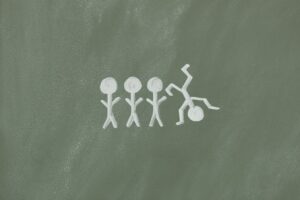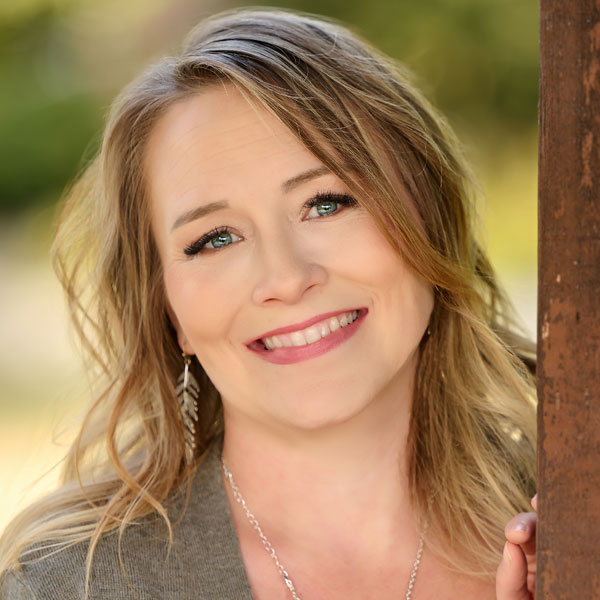Autism is a developmental disability that primarily affects social interactions and communication skills, and typically includes fixations with routines, restricted interests, and repetitive patterns of behavior.
 Before 2013, the American Psychiatric Association (APA) recognized four different types of autism based on specific sets of symptoms affecting a child’s development. Each one was given a unique diagnostic label in the Diagnostic and Statistical Manual of Mental Disorders (DSM-IV) with the intent of helping medical professionals, educators, and parents understand the potential support and resources that would be needed to care for the child so diagnosed.
Before 2013, the American Psychiatric Association (APA) recognized four different types of autism based on specific sets of symptoms affecting a child’s development. Each one was given a unique diagnostic label in the Diagnostic and Statistical Manual of Mental Disorders (DSM-IV) with the intent of helping medical professionals, educators, and parents understand the potential support and resources that would be needed to care for the child so diagnosed.
Over time, it was determined that these labels could be misleading. The lines between the different types of autism were not always clear. There was a tendency to overgeneralize a child’s situation and try to find ways to put him or her in a box that might not fit them well, and diagnoses were not being made consistently, so members of the APA set out to update the diagnostic criteria.
The new update redefining autism was published in the revised edition of the diagnostic manual, DSM-5, released in May of 2013. Instead of being listed as separate individual disorders based on different groupings of symptoms, the previous four autism diagnostic classifications were merged and reclassified as one all-inclusive disorder with three levels of severity.
Since then, anyone with autism traits, no matter the nuances, receives the same diagnosis of autism spectrum disorder (ASD).
Autism spectrum disorder
Autism spectrum disorder is a blanket term used in DSM-5 to identify people who experience persistent difficulties with social communication and social interaction, have restricted interests, and engage in repetitive patterns of behavior.
It is described as a spectrum disorder because it affects different people in different ways and to different degrees. To make the diagnosis of ASD more specific, it has been broken down into three levels according to the severity of the symptoms and the amount of support the person is likely to need.
ASD Level 1
Level 1 ASD is the mildest form of autism spectrum disorder and people diagnosed with it are likely to need the least amount of support. It is also sometimes referred to as high-functioning autism or autism with low support needs.
People at this level of the spectrum typically develop language skills on the same timeline as their non-autistic peers but struggle with social cues and have trouble communicating with others, initiating or having back-and-forth conversations, and/or responding appropriately in social situations.
In addition to their communication challenges, individuals at Level 1 tend to have trouble switching between activities and feel uncomfortable with unexpected changes or events. They are likely to require some support to help them with their social interactions, planning skills, and staying organized. Symptoms of ASD Level 1 may at first be overlooked because they are not as obvious in younger children and become more noticeable as the child gets older.
ASD Level 2
 Level 2 ASD is the middle level of autistic spectrum disorder and typically requires a substantial amount of support. People who have been diagnosed with Level 2 ASD have more noticeable difficulties with verbal communication and more restricted interests than those with a Level 1 ASD diagnosis. They may be unable to clearly express themselves or communicate what they need because their speech is limited, or they are not able to speak at all.
Level 2 ASD is the middle level of autistic spectrum disorder and typically requires a substantial amount of support. People who have been diagnosed with Level 2 ASD have more noticeable difficulties with verbal communication and more restricted interests than those with a Level 1 ASD diagnosis. They may be unable to clearly express themselves or communicate what they need because their speech is limited, or they are not able to speak at all.
People at Level 2 on the spectrum may act young for their age, fail to respond to their name, avoid eye contact, have behavior problems, exhibit obvious repetitive coping behaviors, and become distressed by even small changes in their daily routine.
ASD Level 3
Level 3 ASD is the most severe form of autistic spectrum disorder, and people diagnosed at this level of the spectrum have the highest support needs.
They have difficulty taking care of themselves, tend to be inflexible, withdrawn, engage in repetitive behaviors such as hand flapping or rocking back and forth, and get distressed by unexpected events, changes in their environment or routine, or being required to change focus. They are often nonverbal or have a limited ability to communicate and interact socially with others.
Although the four pre-2013 diagnostic labels for different types of autism are no longer recognized for insurance coding purposes, many physicians still use them in a patient’s medical records and they are often used in conversation by parents, professionals, and the autistic community as well. People previously diagnosed with Asperger’s tend to be reluctant to stop using the term because they have come to see it as an important part of their identity.
How different types of autism were labeled pre-2013
Autistic disorder
Autistic disorder, also known as classic autism or pervasive development disorder (PPD), was the broadest of the four categories of autism on the list. It was a general diagnosis that included symptoms of all the other three, but on a much more severe level, and is the typical case most people think of when they hear the word “autism.”
The term autistic disorder has now been replaced by autism spectrum disorder (ASD). Both encompass a wide range of mild to severe language, social, and behavioral challenges, as well as repetitive behaviors such as hand flapping or rocking back and forth.
Asperger’s syndrome
Asperger’s syndrome was a diagnosis given to people considered to be at the highest functioning end of autistic disorder and who had low support needs. It was also sometimes referred to as high-functioning autism.
People with Asperger’s often have average to above-average intelligence and language development skills and can handle daily life, attend college, hold down a job, excel in specific areas, and have great memories and problem-solving skills.
 However, they tend to be socially awkward, have trouble relating to people or making friends, and struggle with navigating social interactions. They have difficulty understanding nonverbal cues, irony, or humor; seeing things from another person’s perspective; and engaging in deviant behaviors such as avoiding eye contact or standing too close.
However, they tend to be socially awkward, have trouble relating to people or making friends, and struggle with navigating social interactions. They have difficulty understanding nonverbal cues, irony, or humor; seeing things from another person’s perspective; and engaging in deviant behaviors such as avoiding eye contact or standing too close.
In addition to their social interaction challenges, people with Asperger’s Syndrome tend to have inflexible thoughts and behaviors, engage in obsessive routines, have an intense interest in one or two topics to the exclusion of all else, and are extremely sensitive to certain stimuli such as bright lights or loud sounds.
Asperger’s may often go undiagnosed until later in life as the child may at first appear a little quirky but normal to others. The label of Asperger’s syndrome has now been replaced with ASD Level 1, which is at the mildest end of autism spectrum disorder.
Childhood Disintegrative Disorder (CDD)
Childhood disintegrative disorder, also known as Heller’s syndrome, is a rare and devastating form of late-onset autism. This diagnosis was used to describe a specific group of children who develop normally until about the age of 3, and then suffer a sudden regression in cognitive abilities and experience a rapid decline in acquired skills, losing most or all their acquired abilities.
The label of childhood disintegrative disorder has now been integrated into that of autism spectrum disorder and would be considered Level 3 ASD.
Pervasive Developmental Disorder Not Otherwise Specified (PDD-NOS)
 Pervasive developmental disorder not otherwise specified was a catchall diagnosis, also known as atypical autism, that was used to describe children who didn’t fully fit the criteria for other types of autism but still had some autistic traits.
Pervasive developmental disorder not otherwise specified was a catchall diagnosis, also known as atypical autism, that was used to describe children who didn’t fully fit the criteria for other types of autism but still had some autistic traits.
This included children who functioned normally in many situations but also had communication issues and social challenges. Because traits of PDD-NOS could range from mild to intense, and there was no easy way to define them, this diagnostic category no longer exists.
If you have questions about this article on different types of autism or would like to set up a risk-free appointment to meet with one of the faith-based counselors in our online directory and explore how you and/or your child could benefit from counseling, please don’t hesitate to give us a call.
References:
“Fact or Fiction: Are There Different Types of Autism.” Expert Community Care Management (ECCM). eccm.org/blog/fact-or-fiction-are-there-different-types-of-autism.
Lisa Jo Rudy. “5 Outdated Autism Diagnoses.” Verywell Health. Updated November 15, 2023. verywellhealth.com/what-are-the-different-types-of-autism-260611.
Photos:
“Right and Left Brains”, Courtesy of ElisaRiva, Pixabay.com, CC0 License; “It’s Okay to be Different”, Courtesy of Polina Kovaleva, Pexels.com, CC0 License; “Stick People”, Courtesy of Tara Winstead, Pexels.com, CC0 License; “Autism is not a Disability”, Courtesy of Polina Kovaleva, Pexels.com, CC0 License






